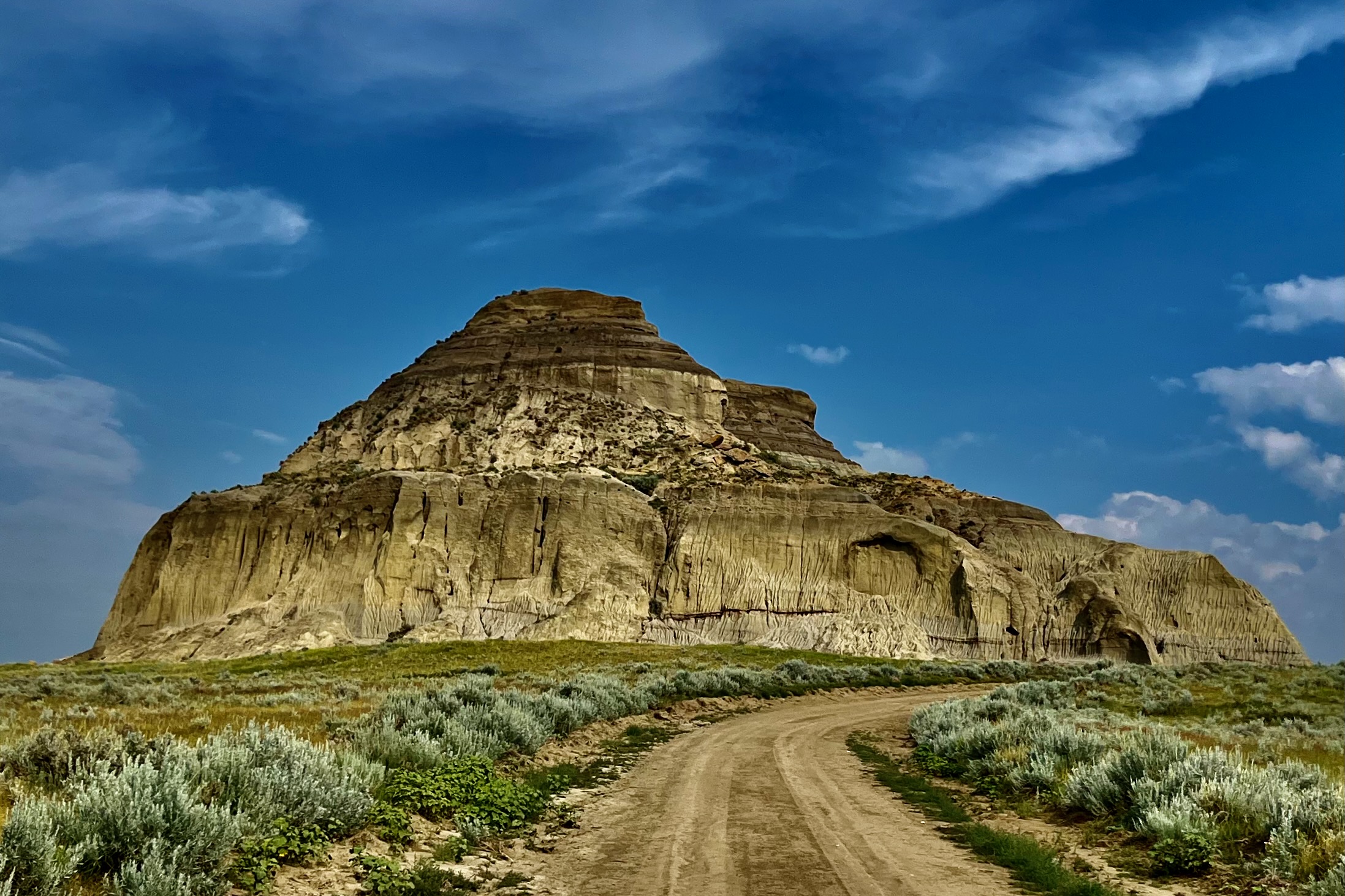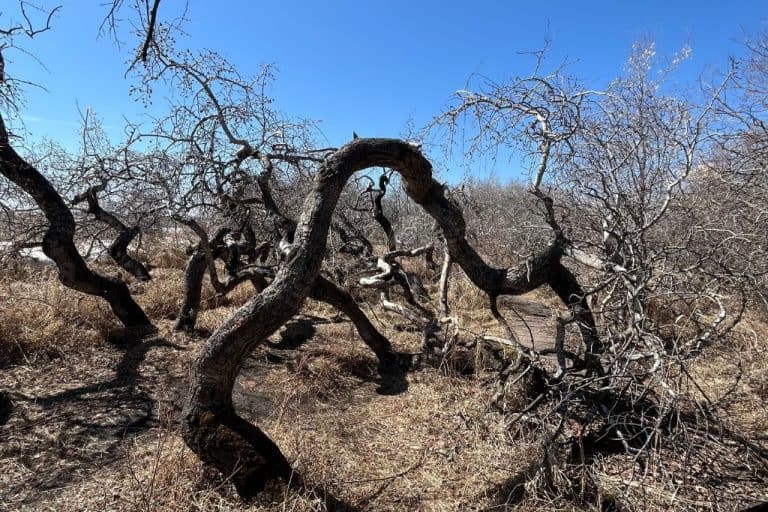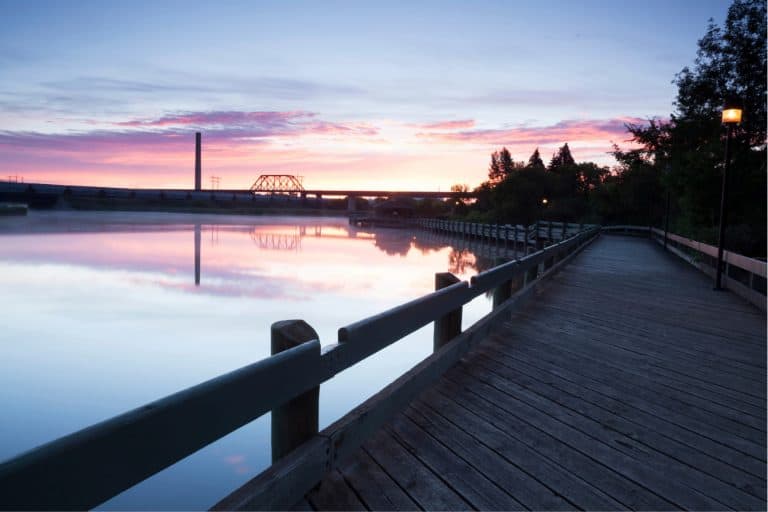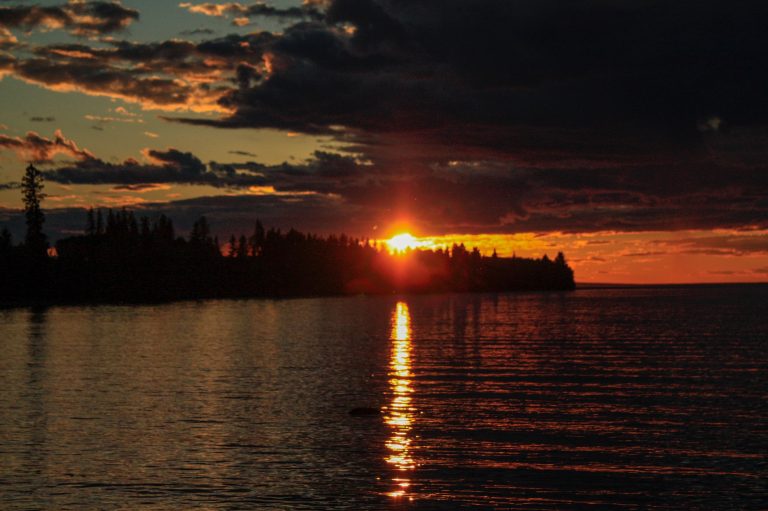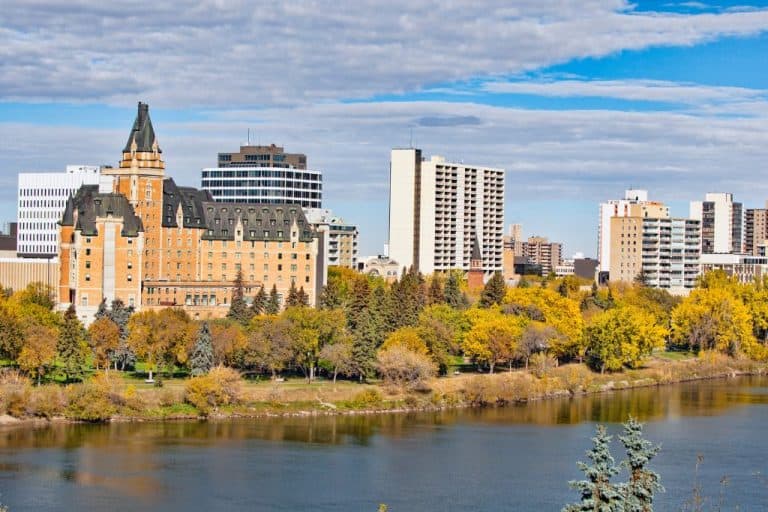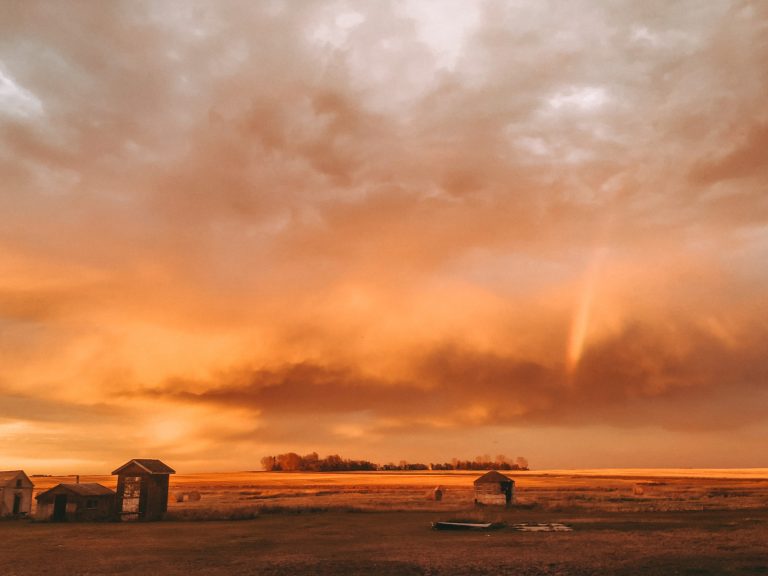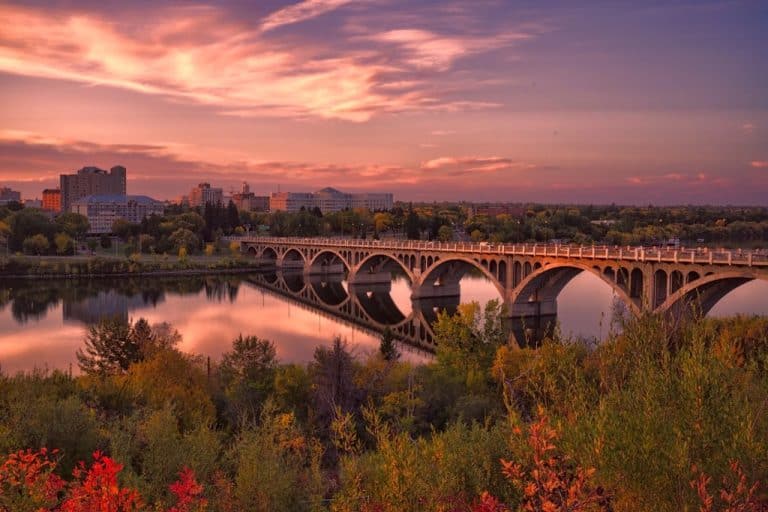Canada’s Wild West in Saskatchewan’s Big Muddy Badlands
Saskatchewan might not top many travel lists, but it wasn’t always Canada’s forgotten middle child. Growing up in Moose Jaw, I had no idea that just a short drive away lay the Big Muddy Badlands. With rugged hills, winding coulees, and hidden corners, it is completely different from the flat prairie we all picture. Southern Saskatchewan was once Canada’s untamed frontier — where bootleggers smuggled liquor across dusty trails, outlaws vanished into sandstone caves, and Indigenous peoples left a sacred imprint on the land. These southern prairies hold secrets like a forgotten diary — dusty, tucked in a drawer, and brimming with stories.
From the wind-carved Big Muddy Badlands to the shadowy tunnels beneath Moose Jaw, this is where the Wild West brushed up against the Canadian border . And this iswhere the past still lingers in the soil. Everyone knows Al Capone and the infamous Tunnels of Moose Jaw, but Saskatchewan’s wild history runs far deeper. Long before the Mounties imposed law and order, these wide-open plains were a refuge — and a battleground — for gangsters, bootleggers, outlaws, and Indigenous nations alike.
This isn’t the Saskatchewan you learned about in school. If you’re searching for southern Saskatchewan hidden gems beyond the usual tourist trail, this guide will take you deep into the province’s untamed past . From outlaw hideouts and bootlegger tunnels to sacred hillsides and haunted badlands, Saskatchewan has it all. Saddle up — the Canadian Wild West is ready to be explored.
TL;DR
- Southern Saskatchewan’s Big Muddy Badlands are a surprisingly wild escape, full of dramatic coulees, sandstone formations, and prairie views. On our trip, we explored
- Castle Butte
- The 11.5 km Valley of 1000 Devils
- The historic Claybank Brick Plant.
- The region’s outlaw history adds a layer of intrigue
- Indigenous sacred sites and effigies remind us the land has stories far older than ours.
- Guided tours are required to explore the Big Muddy Badlands beyond Castle Butte
- Renting a car via DiscoverCars.com and booking nearby stays with Stay22 makes exploring the Badlands easy and flexible.
This post. contains affiliate links, which means if you make a qualifying purchase after clicking on one of my links, I may earn a small commission at no extra charge to you. Thank you for supporting my blog.
Big Muddy Badlands Hidden Gems
The Big Muddy Badlands are a refreshing detour from the “Saskatchewan is nothing but flat fields” stereotype. Here, the land dips into a valley of clay buttes, eroded hills, and rugged coulees separate from the open prairie above. It’s not dramatic in a flashy way, but the shift in scenery is enough to make you slow down and appreciate how varied the province really is.
What really makes the Big Muddy worth the trip is the mix of landscape and stories. Alongside the striking terrain, you’ll find ancient effigy sites, caves, and outlaw lore woven into the hills. Whether you join a guided tour or simply take the drive, it will leave you with a new perspective on Saskatchewan.
📌 Pro Tip- Visiting the Badlands will require access to a vehicle. If you need to rent a car we recommend Discovercars.com.
Castle Butte — Centerpiece of the Badlands
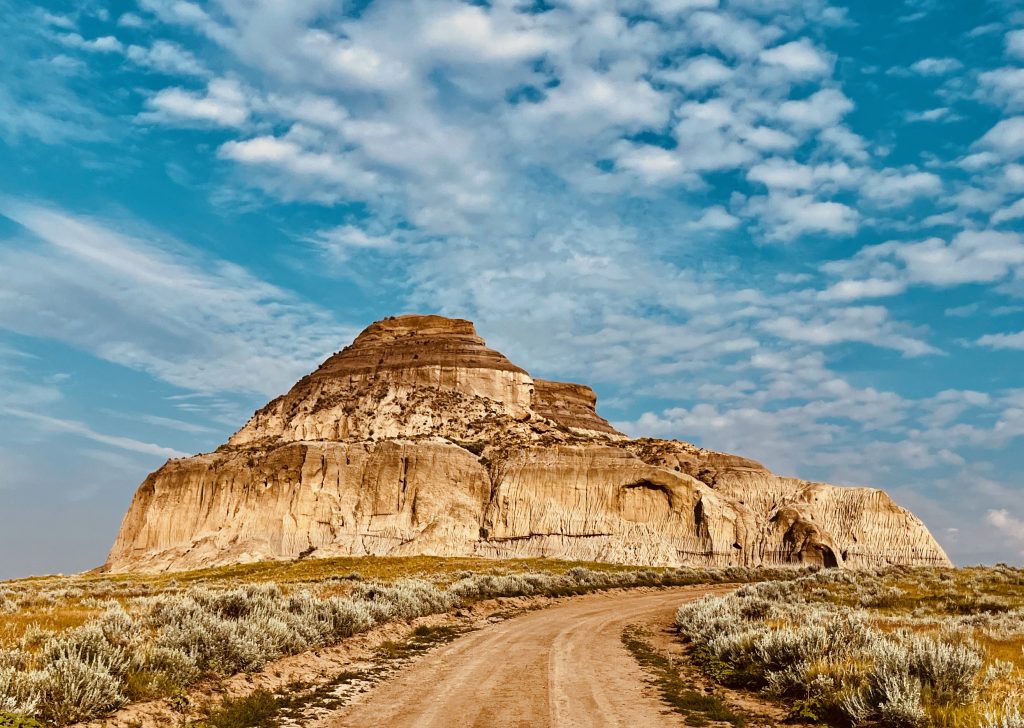
This summer, my mom Sarah and I finally decided to explore the Badlands ourselves. We packed up for a mini road trip and headed south. Our first stop was Castle Butte, the crown jewel of the Big Muddy Badlands. After seeing pictures online, I was curious to experience it in person — and it did not disappoint.
Castle Butte: A Prairie Monument
The butte rises sharply about 60–70 metres (200–300 feet) from the prairie, standing alone like a natural monument. Locals once called it a “prairie lighthouse,” since it could be seen from miles away. Outlaws, Indigenous nations, and Mounties alike used it as a navigational tool to guide their travels.
Getting There
Access is easy via a short drive down a gravel road. Unlike much of the Big Muddy, Castle Butte is publicly accessible. It sits on private property but has no admission fee, no operating hours, and rarely any crowds.
Hiking and Views
You can wander around the base or take the short but steep scramble to the top. Though the distance is modest, the vertical gain makes the view feel earned. Good shoes are a must—the paths are dusty and crumbly in places. I wore my Hoka Speedgoats, while Sarah decided to race straight down, reaching the bottom in under a minute (not recommended unless you’re confident in your balance!).
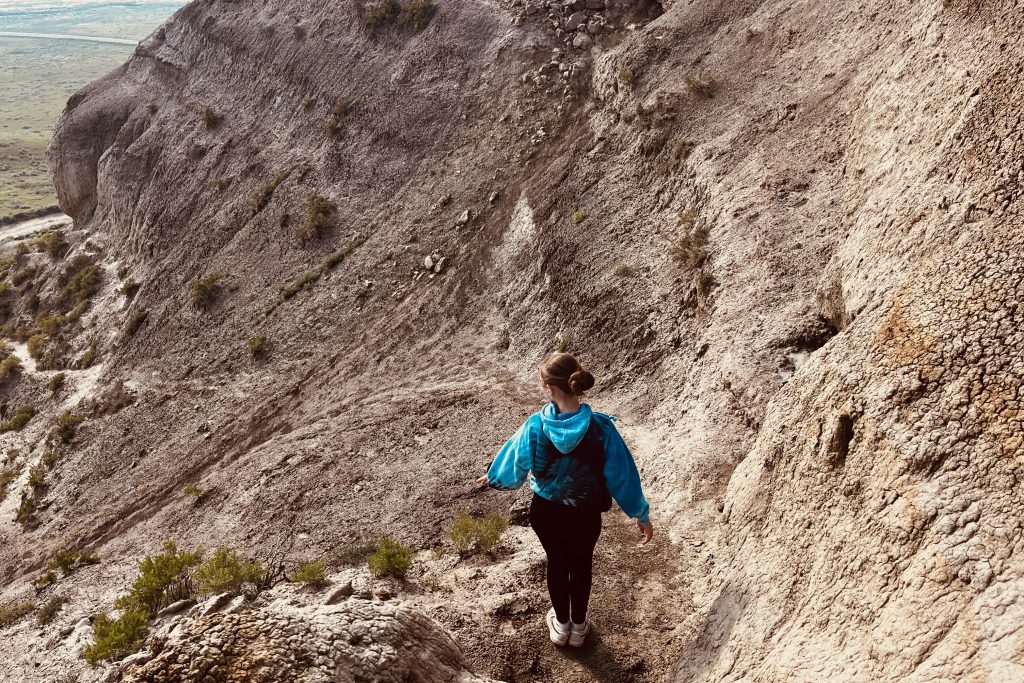
We spent about 45 minutes here—scrambling, taking in the views, and snapping photos. Although we visited in the middle of the day with bright blue skies, Castle Butte would be an amazing spot to watch the sunset over the hills. A short stop here is enough to appreciate how surprisingly varied and scenic southern Saskatchewan can be.
📌 Related Read- The Crooked Bush:-A Twisted Forest Full of Mystery
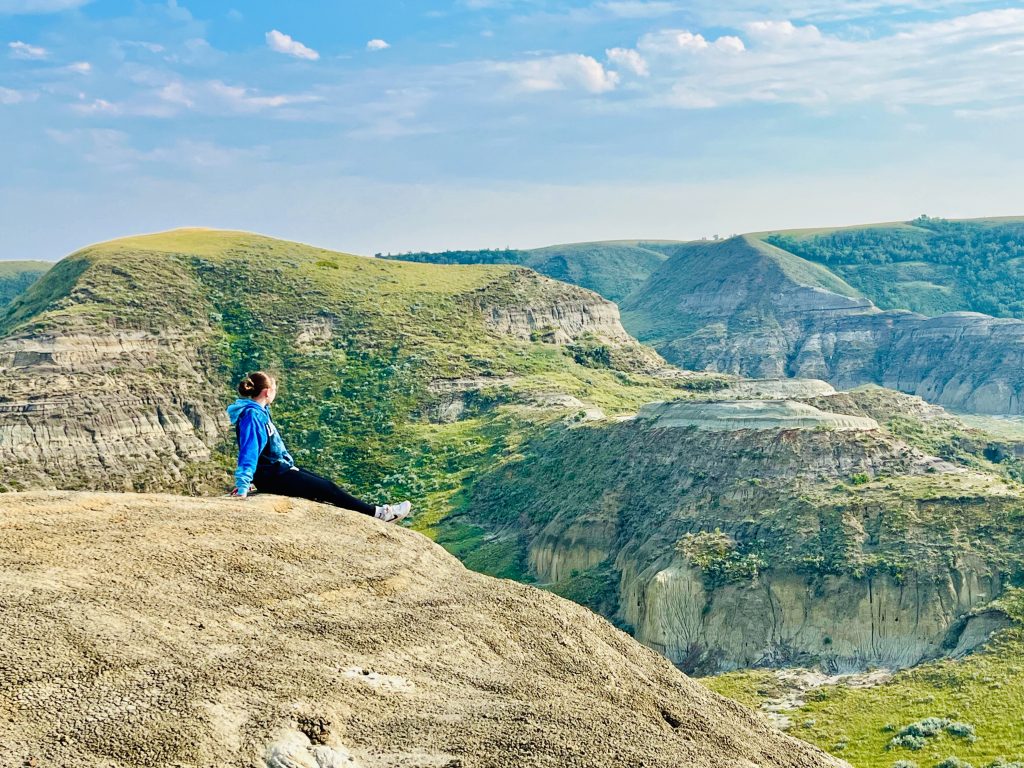
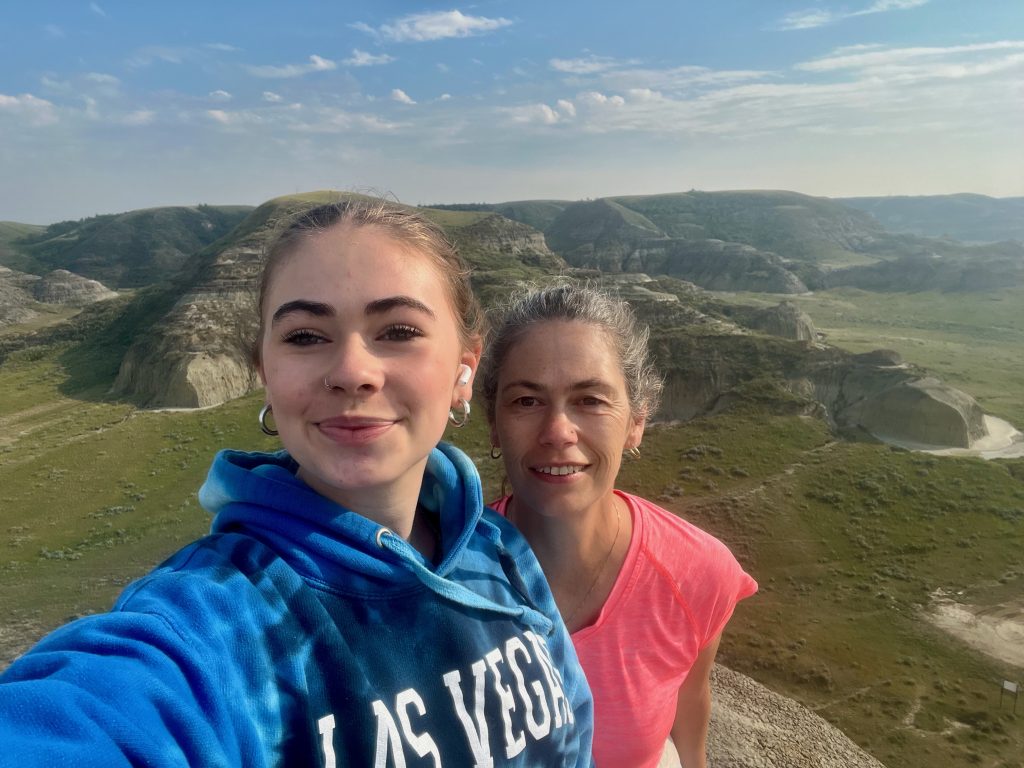
Outlaw History and Hidden Trails
The outlaw legends of the Big Muddy Badlands rival anything from the American frontier. Horse thieves, bootleggers, and fugitives once slipped across the U.S.–Canada border and vanished into the coulees and caves. The most famous hideout is Sam Kelly’s Cave. The outlaw reportedly took refuge in the early 1900s after a string of horse thefts. Much like the sandstone formations at Roche Percée, which are tied to both outlaw legends and Indigenous stories, the Big Muddy’s rugged landscape blurs the line between history and myth.
Today, you won’t stumble across Sam Kelly’s Cave on your own—it’s only accessible through a guided tour. These tours bring the outlaw stories to life and complement the broader bootlegging history told in the Tunnels of Moose Jaw. Linking these places together paints a fuller picture of southern Saskatchewan’s Wild West past. From the caves of Roche Percée to the badlands of Big Muddy to the tunnels beneath Moose Jaw, the province is crisscrossed with legends of outlaws, bootleggers, and the people who pursued them.
Tour Information
If you want to experience more than Castle Butte, you’ll need to book a guided tour.
Big Muddy Tours offers both half and full day tours that include stops at Sam Kelly Outlaw Caves, Castle Butte, sacred Indigenous sites, and other historical sites.
Rates are between $65-$85 per adult (youth $30-$40; kids under 5 free) with a minimum of two people per booking. Tours occur in your personal vehicle, where a tour guide will join you and direct the trip.
Tours must be reserved in advance, which is one of the reasons we didn’t join one on our spontaneous trip down south. However, it’s the only way to see places like Sam Kelly’s cave, the Indigenous effigies, and the hidden outlaw trails that give this valley its legendary reputation.
📌 Pro Tip– Access to the entire Big Muddy Badlands, including Castle Butte is only available from June 1st- November 1st. Because the entire area is on private land, the landowners restrict access to protect calving season and their privacy.
Big Muddy Badlands Sacred Indigenous Roots
Long before outlaws roamed the coulees, the Big Muddy Badlands were home to Indigenous peoples whose presence and traditions are still visible in the landscape. The area contains sacred sites, including ceremonial locations and ancient earthworks, such as effigies—large shapes crafted from stone or earth in the forms of animals or symbolic figures. These effigies were likely used for spiritual ceremonies, storytelling, or as markers for seasonal gatherings.
Visitors today can glimpse these cultural treasures as part of the guided tours. Exploring the badlands through this lens adds depth to the dramatic terrain. It’s a gentle reminder that this land has been meaningful for generations before it became known for outlaws or bootlegging.
Big Muddy Tours “Outlaws and Effigies” tour includes three sacred Indigenous sites and the Sam Kelly Outlaw Cave
Nearby Badlands
While the Big Muddy Badlands are the heart of southern Saskatchewan’s rugged landscape, other intriguing sites nearby invite travellers to explore further. From the historic Claybank Brick Plant and its striking Massold Clay Canyons to the dramatic rock formations of the Valley of 1000 Devils, these destinations offer a mix of geology, history, and hiking opportunities. Each spot is unique, giving travelers a deeper look into the province’s untamed terrain and colorful past.
Claybank Brick Plant: History and Hiking
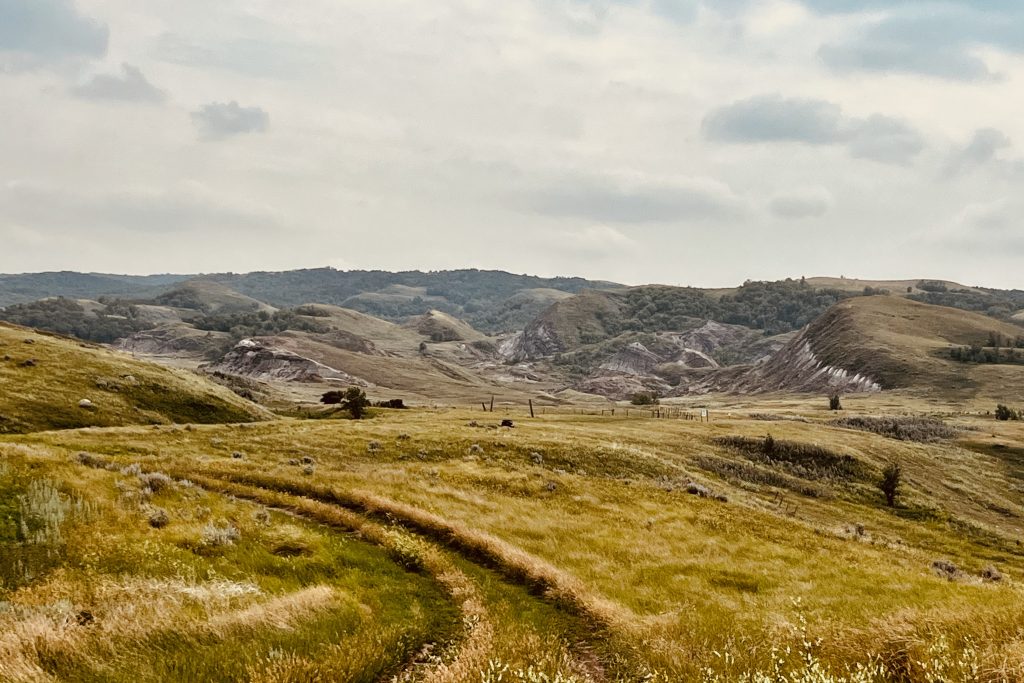
Mom wanted to get some hiking training in before our Iceland trip, so we made a quick detour to the Claybank Brick Plant National Historic Site on our way to Castle Butte. Located about 40 minutes from Moose Jaw, just outside the Hamlet of Claybank, it added only 10 minutes to our drive and offered a perfect mix of history and exercise.
Industrial Heritage
Established in 1914, the plant produced heat-resistant firebrick that went into everything from wartime ships to the CN Tower. Today, visitors can wander among the original factory buildings, step up to the massive beehive kilns, and learn about the workers and the community that built both the plant and the surrounding hamlet.
Massold Clay Canyons: Hiking Trails
Behind the plant, the Massold Clay Canyons reveal sculpted clay ridges, gullies, and prairie flora—ideal for stretching the legs. A day hiking pass (required for both the Canyons and plant site) grants access to this unique blend of natural and industrial heritage. Trails include a groomed 3.1 km loop, considered moderate, or a more rugged 8.5 km ungroomed route for those seeking extra adventure.
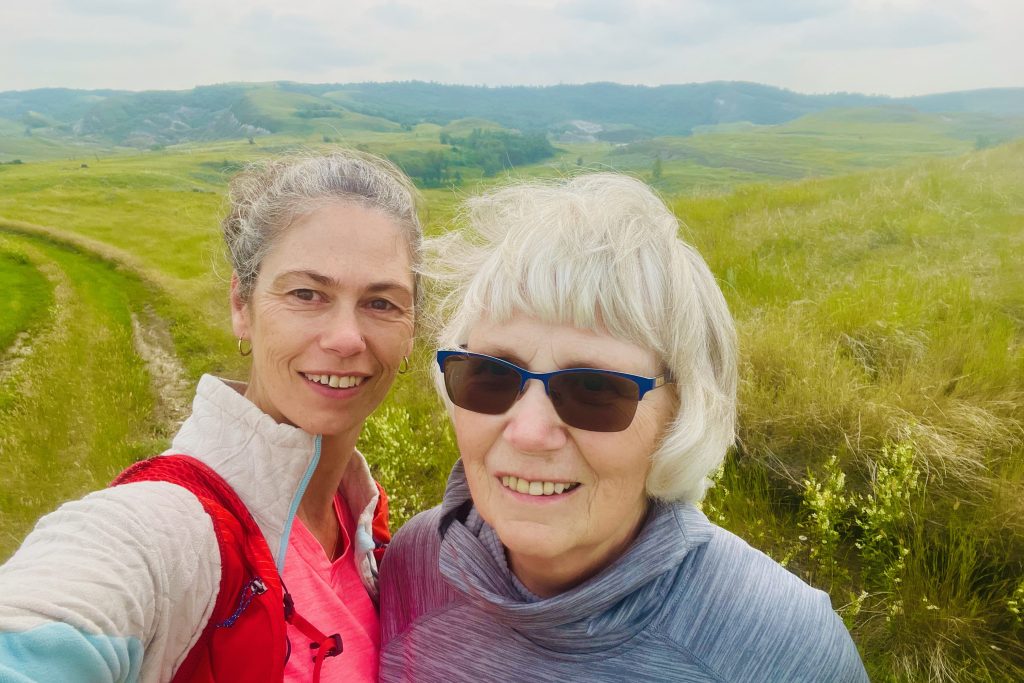
Why Visit
What makes Claybank especially memorable is its location at the edge of Saskatchewan’s badlands. Rising behind the plant are rugged clay and sandstone hills, shaped by erosion into folds and ridges that feel worlds away from the flat prairie. Between industrial relics and natural scenery, Claybank offers a fascinating roadside stop for history buffs, hikers, and photographers alike.
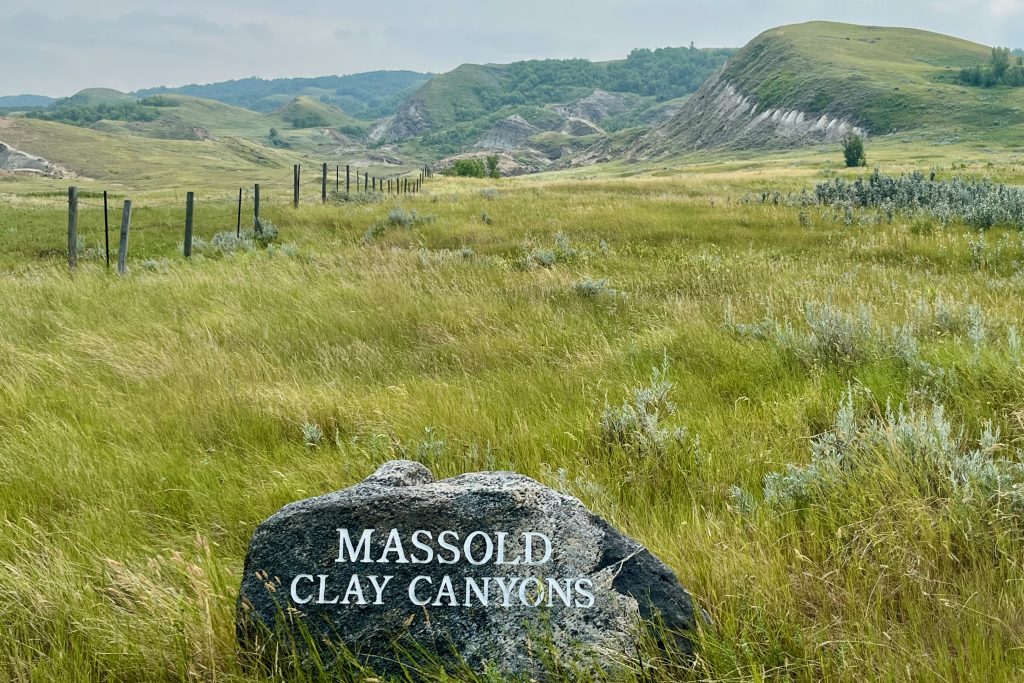
| Hours | Friday–Sunday, 10 AM–5 PM, seasonally (typically June-Sept). |
| Admission | Adults: $10, Youth (6–16): $5, Seniors: $6, Family pass: $25 (covers both plant and Canyons). |
| Trails | 3.1 km groomed loop (moderate), 8.5 km ungroomed route. |
| Highlights | Beehive kilns, historic buildings, prairie vistas, wildlife, interpretive displays, Bunkhouse Café. |
Valley of 1000 Devils- Grasslands National Park
After Castle Butte we headed to the East Block of Grasslands National Park. I had recently heard about the Valley of 1000 Devils trail and was ready to check it out. The drive took us past a vibrant field of sunflowers, where we couldn’t resist stopping for a quick photo shoot.

Once at the valley, the dramatic coulees and eroded rock formations offered a striking contrast to the surrounding prairie, making it a fantastic spot to explore and take in the unique southern Saskatchewan landscape. The Rock Creek Campground is situated at the trailhead, making it a convenient place to spend the night before starting the hike in the morning.
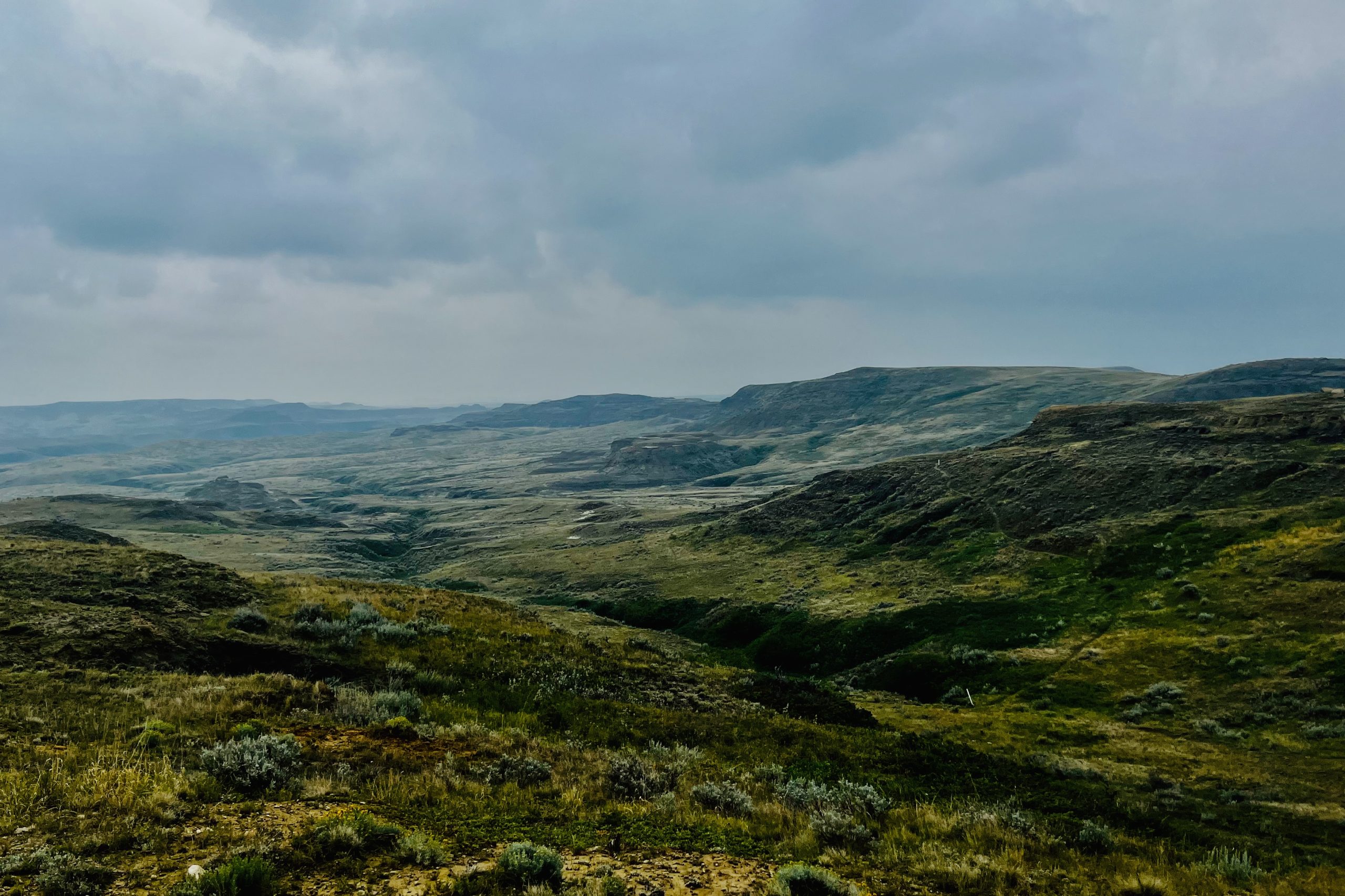
The trail is 11.5 km with 173 m of elevation, winding through rugged coulees, buttes, and hoodoos and offering plenty of opportunities to explore along the sandstone cliffs. It is well marked with white posts. This is one of the park’s more remote areas, meaning the traffic is fairly low.
📌 Pro Tip– the temperature in the valley can be up to 10 degrees hotter than at the trailhead. Be prepared with water, electrolytes, and sun protection. Plan the hike for early morning or later evening if the temperature is high.
Above is a map of all the places mentioned in this post. Just click on the blue icons to find out what location they correspond to.
How to Plan Your Trip to the Big Muddy Badlands
The Big Muddy Badlands are remote, so a little planning goes a long way. Having your own vehicle is the easiest and most economical way to explore at your own pace — you can check out rental options through DiscoverCars.com for flexibility and convenience.
Big Muddy Badlands can easily be explored as a day trip from Moose Jaw or Regina, where you will find the most options for hotels. Using Stay22, you can easily find accommodations that fit your style and budget, whether that’s a cozy local inn or luxury hotel. Just enter your dates, budget, and number of people on the map below.
However, if you’d like to stretch your adventure into more than a day, you could consider staying overnight nearby. Coronach is the closest location to Big Muddy, and Assiniboia is a midpoint between Coronach and Moose Jaw, but both have limited overnight options.
Conclusion: The Secrets Southern Saskatchewan Still Holds
The Big Muddy Badlands are a must-see for anyone exploring southern Saskatchewan. Between the dramatic landscapes, outlaw folklore, and sacred sites, there’s a little something for everyone to enjoy. The area’s outlaw history, with figures like Sam Kelly, and connections to the Tunnels of Moose Jaw and Roche Percee, give it a wild, adventurous edge. Meanwhile, Indigenous sacred sites and effigies remind visitors that this land holds stories far older than our own. From the towering Castle Butte to the nearby winding Valley of 1000 Devils trail, and the historic Claybank Brick Plant, the region is full of hidden gems waiting to be discovered.

